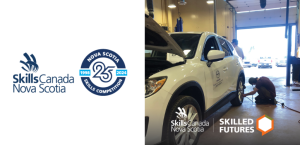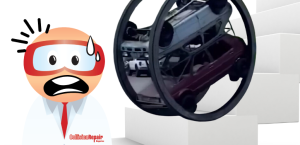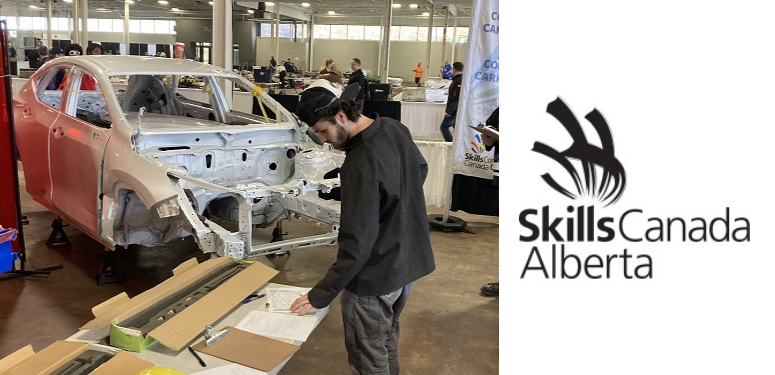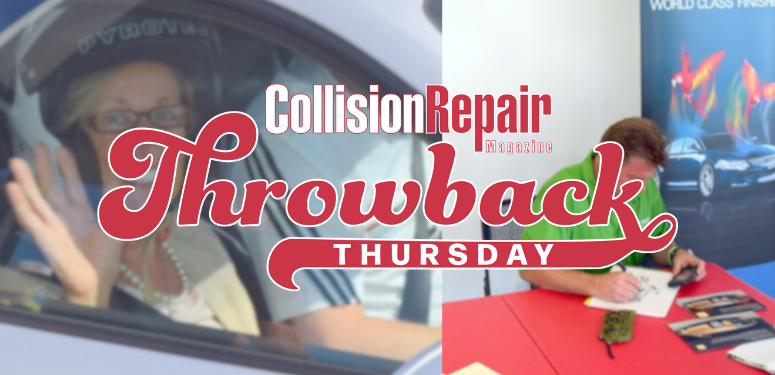Toronto, Ontario — Oct. 8, 2019 — Last week, Mitchell held a proof of concept demo to demonstrate the predicted capabilities of its XR Smart glasses technology that it is developing in collaboration with Qualcomm and its integration into collision repair centres. With Augmented Reality (AR) solutions already on the rise, what does XR technology bring to the table?
Collision Repair got in touch with Jack Rozint, the senior vice president of sales & service at Mitchell to gain a better understanding of XR solutions, as well as to see just how the technology could begin to shape the industry.
Collision Repair: Most people at this point have probably heard of AR technology. What are the main differences between AR and XR technology?
Jack Rozint: XR is actually a term that Qualcomm is using, and it’s an umbrella term encompassing Augmented Reality (AR), Virtual Reality (VR) and Mixed Reality (MR). It’s the term they are using to blend these bleeding edge technologies together into what they’re calling Extended Reality (XR)–a platform in which to build solutions on.
CRM: What role can XR technology take in collision repair facilities?
JR: The amount of information needed to process a collision repair today is just exploding. Years ago they said that if a technician studied 5,000 pages of documentation, they would know how to perform repairs on all existing vehicles–that number today has increased to tens of millions of pages of documentation for existing OEM repair procedures.
So this explosion of information has led to the need for different platforms and architectures that allow access to that information. There’s a need for more seamless, on-demand information that meets the need of the technician who’s facing a new challenge with every vehicle that rolls in the door.
Years ago, different manufacturers would come in with different vehicles which would change from year to year, but the basic construction would stay the same, as would the materials and technology used.
Today, every manufacturer’s vehicles–even within their own product line–is different. The joining methods, the diagnostics, the ADAS systems–all are unique in each vehicle platform. This now requires specialized information to process, which is where XR technology can really help.
CRM: What can repairers and technicians expect when using Mitchell’s XR smart glasses once they come to market?
JR: We’ve been looking at a number of use cases. One of the most compelling is the ability for a technician, while repairing a vehicle, or a repairman, while disassembling a vehicle, to be able to access the OEM repair procedures on the smart glass screen while still keeping both hands free to work. For example, if I’m sectioning a rail, I can have the rail-sectioning procedure right in front of me and with a simple voice command, I’m able to page through it, zoom in and out, or to move on to the next procedure–all through voice commands.
So when you take this example and compare it to the old way, which is to stop what you’re doing, look up a repair procedure, print it out, bring it back to the car–all this can now be done in real-time with voice commands in conjunction with the work. It makes the repair process much more simple, and much more powerful.
CRM: With concerns over smart device distractions at the workplace, is there any worry that the XR glasses will be a bit much for some people to handle?
JR: Well, I’ve checked with my daughters and they seem to be able to spend every day with their noses in their screens without too much worry! (laughs) I think we’re all getting used to digital content in all aspects of our lives–even my car has a heads-up display while I drive. The XR glasses are just another computing platform.
When you think about it, using the glasses is similar to using a seven-inch tablet a couple of feet away from your face in an area that’s slightly to the side in your peripheral view so that you can maintain your field of vision on the work you’re doing. It may take a few minutes at most to get used to, but our eyes are able to adjust back and forth pretty quickly. We’ve had good experiences so far during our trials.
CRM: With Mitchell’s proof of concept demo on October 1, what were you hoping the public takeaway would be?
JR: Because there are so many use cases for this technology in a collision repair environment, we were looking at all the scenarios in which it could be used. We did a lot of the proof of concept work in Canada and found that there are at least three scenarios that could heavily benefit from this technology.
One is the vehicle checking process, so that when you need to observe the vehicle and take pictures to document any preexisting damage as well as get the VIN number–all of that is done elegantly with the XR smart glasses. You can zoom in and scan the VIN number automatically, do OCR reading of the VIN on the dash, and go all around the vehicle taking pictures and annotating any damages you find through voice commands. What we’ve seen is that this can reduce the check-in time from 20 minutes to eight–which, in a high-volume facility, that reduction is integral.
All of our diagnostic solutions at Mitchell have the ability to support a remote technician connecting to the diagnostics tool to assist a user on-site get through a difficult job. So another use of the glasses is for you to able to have a diagnostic tool connected to the vehicle, a highly-experienced technician assisting remotely while they’re seeing what you’re seeing.
The third is vehicle teardown. During disassembly when the estimate is being initially developed along with the repair plan, being able to take quick snapshots and document any findings significantly streamlines the process.
CRM: What do you in the development of this technology in the next few years? When do you predict it could be fully integrated into collision repair workspaces?
One of the things that came out of our conference last week was the prediction that cell phone use, in general, will be migrating to smart glasses. Many who are just observing the consumer space are thinking that smartphones migrating towards glasses as the most common platform for personal computing will occur in the next three years. If this scenario is close to being accurate, you could expect that most, if not all of customer service representatives and technicians in a collision repair facility will be wearing this technology in five years from now.





































